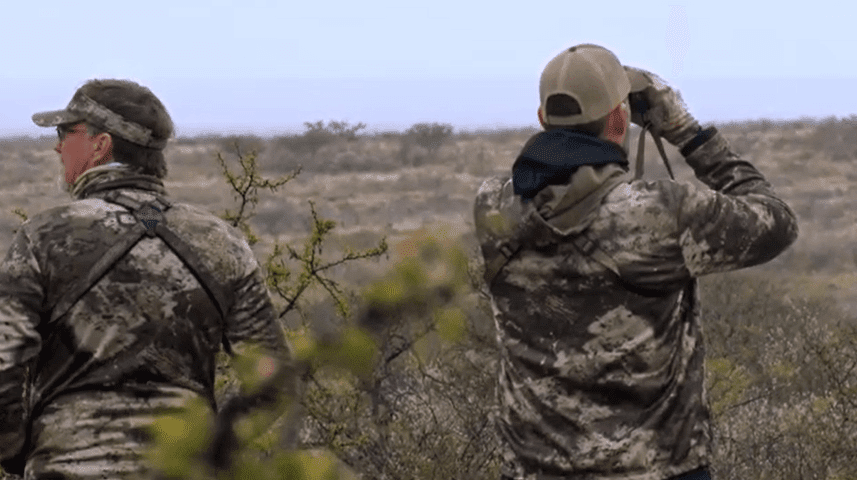Tree stands provide an incredible vantage point for wildlife photography, allowing photographers to capture stunning images of animals in their natural habitat. To make the most of this opportunity, it's essential to have the right equipment, including binoculars. Binoculars are crucial for spotting and tracking wildlife, enabling photographers to get up close and personal without disturbing the animals. By using binoculars in a tree stand, photographers can further enhance their experience, getting even closer and clearer views of wildlife while minimizing movement and disturbance.
Selecting the Appropriate Binoculars
When choosing binoculars for wildlife photography, several factors should be considered. The magnification and objective lens size are the two most important factors, in determining the amount of light that enters the binoculars and the clarity of the image. A higher magnification can provide a closer view, but it can also result in a shakier image. The objective lens size can affect the image quality, with larger lenses allowing more light into the binoculars and producing brighter images.
Another important factor to consider is the field of view, which refers to the area that can be seen through the binoculars. A wider field of view is preferable for spotting and tracking movement. Eye relief, the distance between the eyepiece and the viewer's eye, is also essential, especially for people who wear glasses. The weight and size of the binoculars should also be taken into account, as lighter and more compact binoculars are easier to carry for extended periods but may sacrifice image quality.
By selecting binoculars that match the specific needs of wildlife photography, photographers can improve their ability to spot and capture stunning images of animals in their natural habitat.

Using Binoculars on a Tree Stand
Using binoculars while perched on a tree stand can be challenging, but it can also significantly enhance the experience of photographing wildlife. To make the most of using binoculars in a tree stand, consider the following tips:
Positioning - First, ensure that the binoculars are within easy reach. The best ladder tree stand should have a platform that can accommodate the binoculars and keep them within arm's reach. Alternatively, mounting the binoculars on a tripod or bungee cord can also help minimize movement and reduce arm fatigue.
Scanning - Begin by scanning the area with the naked eye before using the binoculars. This can help identify potential hotspots where wildlife is likely to appear. When using binoculars, start by scanning the area systematically, moving from left to right or vice versa. Look for any movement or signs of wildlife, such as rustling leaves or movement in the trees.
Focus - Once wildlife is spotted, use the binoculars to zoom in for a closer look. Ensure that the binoculars are properly focused, adjusting the diopter if necessary. It's essential to keep the binoculars steady, using both hands to hold them and minimizing movement to avoid startling the wildlife.
Lighting - Lighting can also be a crucial factor when using binoculars in a tree stand. Direct sunlight can cause glare, making it difficult to see clearly. In this case, using binoculars with anti-glare coatings or wearing a hat with a brim can help reduce glare and improve visibility.
Using binoculars in a tree stand can be a great way to observe wildlife up close and capture stunning images. By ensuring that the binoculars are positioned correctly, scanning the area systematically, keeping the binoculars steady, and minimizing glare, photographers can make the most of this essential tool while perched on the best ladder tree stand.
Techniques for Spotting Wildlife
Spotting wildlife in a tree stand can be challenging, but with the right techniques, photographers can improve their chances of success. Here are some tips for spotting wildlife:

Listen - Wildlife often makes noise, so it's essential to listen carefully for any sounds that may indicate their presence. The rustling of leaves or the sound of breaking branches can be a sign of nearby animals.
Scan the Area - Scan the area systematically, starting at one point and slowly moving across the field of view. Look for any movement or changes in the environment, such as the swaying of branches or the appearance of shadows.
Use binoculars - Binoculars are an essential tool for spotting wildlife from a tree stand, providing a closer view of animals without disturbing them. Adjust the magnification and focus to get a clear view of the wildlife.
Look for Signs - Wildlife often leaves behind signs of their presence, such as tracks, droppings, or scratch marks on trees. These signs can be an indication of nearby animals and can help guide your scanning efforts.
Observe Behaviour - Animals often exhibit certain behaviors that can indicate their presence. For example, birds may fly in a certain pattern or make specific sounds when they are nearby. By observing and interpreting these behaviors, photographers can improve their chances of spotting wildlife.
Stay Patient - Spotting wildlife from a tree stand can require a lot of patience, so it's essential to stay calm and focused. Take breaks as needed to avoid eye strain and fatigue.
By using these techniques, photographers can improve their chances of spotting wildlife from a tree stand and capturing stunning images of animals in their natural habitat.
Conclusion
Binoculars are an essential tool for any wildlife photographer, especially those in a tree stand. They allow for a clear and close-up view of animals and reduce disturbance.
Using binoculars in a tree stand can enhance the wildlife photography experience and lead to stunning photographs. Encourage readers to give it a try and experiment with different techniques.
By following these tips, photographers can enhance their tree stand photography experience and capture stunning images of wildlife in their natural habitat. Remember, when photographing wildlife, always prioritize safety and respect for the animals and their environment.



Share:
How Night Vision Goggles Work: Introduction to Owl Eye Night Vision
Apexel NV009: New Night Vision Experience